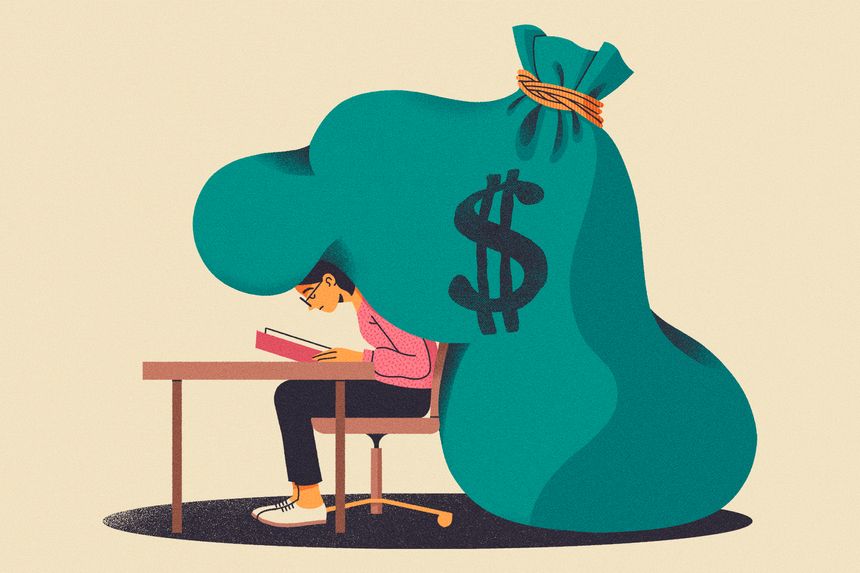Student Debt: A Way of Life?
In America, it takes the average person around 20 years to pay off their college debt — that is one-fourth of the average lifespan spent paying for four years of college. These numbers are only growing worse. It is clear why the question of whether college debt should be canceled is and has been such a hot topic in the United States in recent years.
Ever since Joe Biden proposed a new student debt cancellation plan in April of 2020 in the earlier days of his campaign for the presidency, thousands of people have waited in anticipation to see if he was going to make good on his numerous promises. And now, a year and a half later, it seems he is, according to various sources, including Forbes. However, before we take a look at Biden’s plan and the implications, let’s take a deeper look at the current college debt situation in America and around the world.
The average cost for four years of college in 1985 was around 12,800 USD. Considering inflation, that equivalates to around 32,000 USD in 2021. That is for four years of college. In comparison, one year of college in 2021 costs around 30,000 USD, on average. That means that the comparative cost of college has nearly quadrupled in 40years. This also means that the bulk of college debt belongs to the young adult age bracket, or people currently in their thirties and younger.
Across the United States, the average borrower has around 40,000 USD in debt. Around one-third of American adults now have college debt. Most of this debt was taken out in the form of student loans. On top of all of this, between one-fourth and one-third of all of these borrows are currently behind on their payments. This statistic gets even higher among people who — while they took out loans — never completed their degrees according to the investing website Investopedia. These people make up around one-third of total borrowers in the United States.
It’s clear that the student loan situation is nothing short of an epidemic in the United States and something President Biden has recognized and vowed to help find the cure to during his presidency. Shifting a bit back again, however, President Biden has not been the first politician to suggest such a plan — not by far. Among others, Senator Elizabeth Warren (D-MA), Senator Bernie Sanders (I-VT) and Senate Majority Leader Chuck Schumer (D-NY) have proposed various debt-cancellation plans over the years. President Biden’s plans draw from a variety of these plans, albeit being less extreme in many cases.
It should be recognized that the United States government actually backs over 90% of the total student debt in the United States, which is why the government has so much control over the situation.
Now, onto what Biden has already been doing. So far, according to Forbes, Biden has already canceled around $11.5 billion of debt. He also has widened the eligibility for federal student loan forgiveness programs. These requirements have been widened by: changing what kinds of payments count towards forgiveness, what types of loans count for forgiveness, what kinds of jobs qualify for forgiveness and when payments start counting toward forgiveness. Due to President Biden “targeting” certain groups because of how the administration just ended the requirements for eligibility forgiveness, the administration has managed to cancel a somewhat substantial amount of debt without having to go through the trials and tribulations of enacting a broader law. Essentially, President Biden has been adjusting existing programs rather than creating new ones. However, because of this, many people have been unable to receive any aid through cancelations of forgiveness at all.
Here’s a breakdown of the current cancellation metrics:
- $5.8 billion – people with a total and permanent disability
- $1.5 billion – people defrauded by their college
- $4.5 billion – people working for a non-profit organization or public service group
The main reason Biden has not yet been able to enact new cancelation laws is because it is not solely his call. To create brand-new laws in Congress’s job and while both chambers currently have majorities favoring the Democratic Party, the political margins are razor thin and it is unlikely some of the more moderate Democrats will agree to a too progressive plan.
Disagreements have plagued many of the major Democrats’ investment in a plan to cancel college debt in a wide-scale fashion. Many Congresspeople, including Sen. Elizabeth Warren and Majority Leader Chuck Schumer believe President Biden has the ability to enact more wide-scale action with an executive order, whereas President Biden himself has stated he believes that Congress alone has the legal authority to manufacture new laws to cancel all student loans. To get confirmation on what can actually be done and who it can be done by, President Biden reached out to the U.S. Department of Education in March. However, it still remains unclear which Federal Branch can do what, as opinions still differ.
While President Biden has proclaimed his support of the idea of wide-scale loan forgiveness of up to $10,000 (rather than the $50,000 that many other Democrats have suggested), it is unlikely he will make a move to enact a new law to support this himself. The President seems to be content with what he is currently doing and appears to be leaving the entirety of making new laws up to Congress. This is despite a number of popular progressive democrats,including Sen. Bernie Sanders and Congresswoman Alexandria Ocasio-Cortez (D-NY) calling for Biden to cancel up to the requested $50,000 in loans through a new resolution.
Now that you know more about how college debt and cancellation has been playing out nationwide, it is time to take a look at how a change in the structuring of student debt could potentially affect Morris Hills’ students and staff. According to a “Hilltopper” poll, almost 90% of responders, primarily seniors, are planning to attend a four-year university. 39% of the students are planning to take out loans, while around 40% are still undecided. Most of these students are not yet sure about how much they plan to take out. Additionally, almost 50% of students stated that the amount of loans they would have to take out would ultimately decide where they go to college.
For MH teachers, two-thirds of responding teachers stated that they had to take out loans for their education. Numbers varied from around $10,000 to over $100,000. One-third further stated that they were still paying off their education, while two-thirds stated that that had already paid it off. As for how long the loans took to pay off? Answers varied greatly. Some managed to pay off their loans right after college, while others are going to take over twenty years to pay off their loans.
It is evident that while situations tend to differ, most MH students who plan to attend a four-year university plan to take out loans to afford college. Additionally, most teachers did have to take out loans for their own education. This goes to show how much Morris Hills High School will be affected by both current and future governmental debt cancellation programs.
Nonetheless, maybe it should be considered that perhaps cancelling college debt is not the right or complete solution to the current epidemic in America. College prices have been rising at an unproportional rate compared to salaries and inflation for decades, in a similar trend to housing prices. At the rate prices are rising, soon even $50,000 is not going to be enough to break the chains of debt tying down college-goers.
Add in the exponential increases in competitiveness to even get into college and you have nothing short of one extremely unsustainable education system. As more and more people apply for college each year due to the popular belief that going to college is the only option, spots continue to become more and more valuable and difficult to get a hold of. Nothing short of exceptionalism is required to even have a chance at getting into a decent college.
So, if you can’t get into college or even pay for it without immense loans, what can you do? Especially if you’ve been raised in a society where going to college is oftentimes presented as the only acceptable option?
Hopefully, the debt reduction plan will help to answer that question. Or, perhaps students will start to recognize that pursuing a college education is not the only option after graduating from high school.


